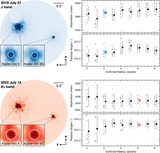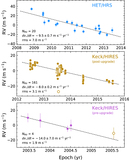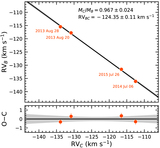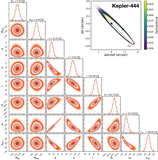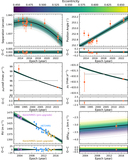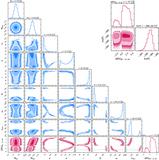Image Details
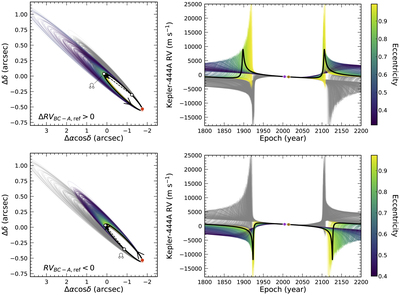
Caption: Figure 7.
Top left: predicted relative astrometry between A and BC components of 1000 randomly drawn orbits from the MCMC chains with positive ΔRVBC−A,ref, color-coded by eccentricity. We overlay 1000 randomly drawn orbits from the MCMC chains with negative ΔRVBC−A,ref and show them in gray. Similar to Figure 4, we use the black solid line to show the best-fit orbit solution with ΔRVBC−A,ref > 0 and use two white circles to mark the ascending (labeled) and descending nodes, connected via a dashed line. We place Kepler-444 A (black star) at ZPs and overlay the observed relative astrometry of BC (orange circles) that occupies the orbital arc at the bottom right. Top right: predicted RVs of Kepler-444 A of the randomly drawn orbits (as shown in the top left panel). Orbits with positive ΔRVBC−A,ref are color-coded by eccentricities, while those with negative ΔRVBC−A,ref are shown in gray, scaled to the same RV ZP. The black solid line shows predictions from the best-fit orbit, overlaid with the observed relative RVs of Kepler-444 A (purple, blue, and brown circles) color-coded by instruments in the same fashion as the bottom left panel in Figure 5. Bottom: the same format as in the top panel, but we show the orbital solution with negative ΔRVBC−A,ref in colors coded by eccentricities and those with positive ΔRVBC−A,ref in gray.
Copyright and Terms & Conditions
© 2023. The Author(s). Published by the American Astronomical Society.


